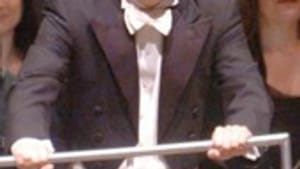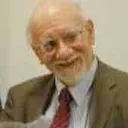Stay in the Loop
BSR publishes on a weekly schedule, with an email newsletter every Wednesday and Thursday morning. There’s no paywall, and subscribing is always free.
Telemann's revenge, or: The sheer delight of going for Baroque
The Baroque revival: Three concerts

At the latest Dolce Suono concert, pianist Charles Abramovic made one of his infrequent appearances at the harpsichord keyboard. In his pre-concert remarks, Abramovic emphasized that he's essentially a pianist, but then he proceeded to discuss some of the special characteristics of Baroque harpsichord accompaniments, like the opportunities they offer for improvisation.
Baroque harpsichordists created their own accompaniments, based on chord symbols written over a bass line. Modern harpsichordists may work with a written part that's been "realized" by an editor, but the best know they should make their own contributions. To really play this music correctly, Abramovic noted, the harpsichordist must be willing to take risks.
Abramovic is a good example of a musician who has responded to the current Baroque revival by adding a period instrument to his attainments and studying the style of the period. The director of the American Society of Ancient Instruments falls into the same category: Vivian Barton Dozor graduated from Curtis as an award-winning cellist and taught herself to play the Baroque cello and the cello's older cousin, the viola da gamba. The other gamba player in the Ancient Instruments ensemble, Michael Shahan, is the Philadelphia Orchestra's assistant principal bass; he played bass with the Ancient Instruments group for many years before he added the gamba to his repertoire.
Other musicians have adapted to the early music revival by pursuing careers as period instrument specialists. The guest recorder player at last Sunday's Ancient Instruments concert, Rainer Beckman, is a native of Germany who studied under three teachers with international reputations.
A revival gaining steam
There was nothing particularly unusual about the three concerts I attended this week. Concerts on period instruments, like the Ancient Instruments program, have become standard features of our cultural life. So have concerts devoted to Baroque forms, like the Dolce Suono trio sonata program and the Chamber Orchestra's spotlight on the concerto grosso. But taken altogether, they form a snapshot of the way the early music revival has altered our musical life.
Today's Baroque revival started in the late 19th Century, but it didn't reach a large audience until audiophiles started listening to Baroque music on long-playing vinyl records in the 1950s. Period instrument groups became a standard fixture of the concert scene in the late 1970s and early '80s.
For musicians, the early music movement has created new opportunities and challenges. For those of us who sit in the audience, it has broadened our experience and added new names to the musical firmament.
Telemann: Not so forgotten after all
I first encountered the name of George Philipp Telemann in a snooty article I read in the early '60s. Telemann was too interested in pleasing his audience, the author opined, unlike Bach, who chose a thornier path. And that's why Bach is an immortal, he concluded, while Telemann is forgotten.
That writer might have been surprised to hear that I attended two concerts this week that ended with pieces by Telemann. The Chamber Orchestra even called its concert "Bach, Handel, Telemann"— as if the group thought Telemann deserved equal billing with a pair of musical demigods.
The Ancient Instruments program actually ended with two Telemanns— a lively concerto for recorder and strings and a trio marked by showy passages for the recorder and little flights for the viola d'amore. The Chamber Orchestra program finished with a charmer. Telemann's Don Quixote suite is a gentle, good-humored piece that captures the essence of the Cervantes fable in 15 compactly written minutes. Telemann may have been a prolific composer who knew what his patrons wanted, but 21st-Century audiences are happy to receive the results, as well as the work of Vivaldi, Couperin, and dozens of other composers who were once considered forgotten.
The conductor as soloist
The Chamber Orchestra concert was a spectacular example of a concert in which the musicians played modern instruments but captured some of the most fundamental virtues of Baroque music. Guest conductor Scott Yoo led the concertos by Handel and Bach while he soloed on the violin— a Baroque practice that has become a familiar sight to modern audiences.
The Chamber Orchestra is an ideal ensemble for that kind of arrangement, since this group often played that way in the days when its musicians were known as the Concerto Soloists. In those glorious days of yore, however, the soloists were members of the orchestra and the soloist's attitude had a big impact on the performance. When a soloist truly appreciated his colleagues' abilities, he would push them to their limits and they would always respond to the challenge.
Maestro Yoo is a super pusher, and he elicited a super performance. The Baroque movement has endured because of the sheer delight musicians and audiences experience when they make contact with the vitality and exuberance of Baroque music making. You could feel that zest in every bar Yoo conducted. â—†
To read a response, click here.
Baroque harpsichordists created their own accompaniments, based on chord symbols written over a bass line. Modern harpsichordists may work with a written part that's been "realized" by an editor, but the best know they should make their own contributions. To really play this music correctly, Abramovic noted, the harpsichordist must be willing to take risks.
Abramovic is a good example of a musician who has responded to the current Baroque revival by adding a period instrument to his attainments and studying the style of the period. The director of the American Society of Ancient Instruments falls into the same category: Vivian Barton Dozor graduated from Curtis as an award-winning cellist and taught herself to play the Baroque cello and the cello's older cousin, the viola da gamba. The other gamba player in the Ancient Instruments ensemble, Michael Shahan, is the Philadelphia Orchestra's assistant principal bass; he played bass with the Ancient Instruments group for many years before he added the gamba to his repertoire.
Other musicians have adapted to the early music revival by pursuing careers as period instrument specialists. The guest recorder player at last Sunday's Ancient Instruments concert, Rainer Beckman, is a native of Germany who studied under three teachers with international reputations.
A revival gaining steam
There was nothing particularly unusual about the three concerts I attended this week. Concerts on period instruments, like the Ancient Instruments program, have become standard features of our cultural life. So have concerts devoted to Baroque forms, like the Dolce Suono trio sonata program and the Chamber Orchestra's spotlight on the concerto grosso. But taken altogether, they form a snapshot of the way the early music revival has altered our musical life.
Today's Baroque revival started in the late 19th Century, but it didn't reach a large audience until audiophiles started listening to Baroque music on long-playing vinyl records in the 1950s. Period instrument groups became a standard fixture of the concert scene in the late 1970s and early '80s.
For musicians, the early music movement has created new opportunities and challenges. For those of us who sit in the audience, it has broadened our experience and added new names to the musical firmament.
Telemann: Not so forgotten after all
I first encountered the name of George Philipp Telemann in a snooty article I read in the early '60s. Telemann was too interested in pleasing his audience, the author opined, unlike Bach, who chose a thornier path. And that's why Bach is an immortal, he concluded, while Telemann is forgotten.
That writer might have been surprised to hear that I attended two concerts this week that ended with pieces by Telemann. The Chamber Orchestra even called its concert "Bach, Handel, Telemann"— as if the group thought Telemann deserved equal billing with a pair of musical demigods.
The Ancient Instruments program actually ended with two Telemanns— a lively concerto for recorder and strings and a trio marked by showy passages for the recorder and little flights for the viola d'amore. The Chamber Orchestra program finished with a charmer. Telemann's Don Quixote suite is a gentle, good-humored piece that captures the essence of the Cervantes fable in 15 compactly written minutes. Telemann may have been a prolific composer who knew what his patrons wanted, but 21st-Century audiences are happy to receive the results, as well as the work of Vivaldi, Couperin, and dozens of other composers who were once considered forgotten.
The conductor as soloist
The Chamber Orchestra concert was a spectacular example of a concert in which the musicians played modern instruments but captured some of the most fundamental virtues of Baroque music. Guest conductor Scott Yoo led the concertos by Handel and Bach while he soloed on the violin— a Baroque practice that has become a familiar sight to modern audiences.
The Chamber Orchestra is an ideal ensemble for that kind of arrangement, since this group often played that way in the days when its musicians were known as the Concerto Soloists. In those glorious days of yore, however, the soloists were members of the orchestra and the soloist's attitude had a big impact on the performance. When a soloist truly appreciated his colleagues' abilities, he would push them to their limits and they would always respond to the challenge.
Maestro Yoo is a super pusher, and he elicited a super performance. The Baroque movement has endured because of the sheer delight musicians and audiences experience when they make contact with the vitality and exuberance of Baroque music making. You could feel that zest in every bar Yoo conducted. â—†
To read a response, click here.
What, When, Where
American Society of Ancient Instruments: Music by Scarlatti, Byrd, Telemann et al. Rainer Beckman, recorder; Heather Gardner, soprano; Paul Miller, viola d’amore; Vivian Barton Dozor, director. April 19, 2009 at Old First Reformed Church, Fourth and Race St. (610) 935-4579 or www.baroque-asai.org.
Chamber Orchestra of Philadelphia: Handel, Concerto Grosso in A Major; Bach, Violin Concerto No. 1 in A Minor; Bloch, Concerto Grosso No. 1; Telemann, Don Quichote Suite. Scott Yoo, conductor and violin. April 20, 2009 at Perelman Theater, Kimmel Center. (215) 545-5451 or www.chamberorchestra.org.
Dolce Suono: Trio sonatas by Corelli, Purcell, Couperin, Handel, C.P.E. Bach, Vivaldi. Hyun Ju Lee, violin; Mimi Stillman, flute; Yumi Kendall, cello; Charles Abramovic, harpsichord. April 22, 2009 at First Unitarian Church, 2125 Chestnut St. (267) 252-1805 or www.dolcesuono.com.
Sign up for our newsletter
All of the week's new articles, all in one place. Sign up for the free weekly BSR newsletters, and don't miss a conversation.

 Tom Purdom
Tom Purdom